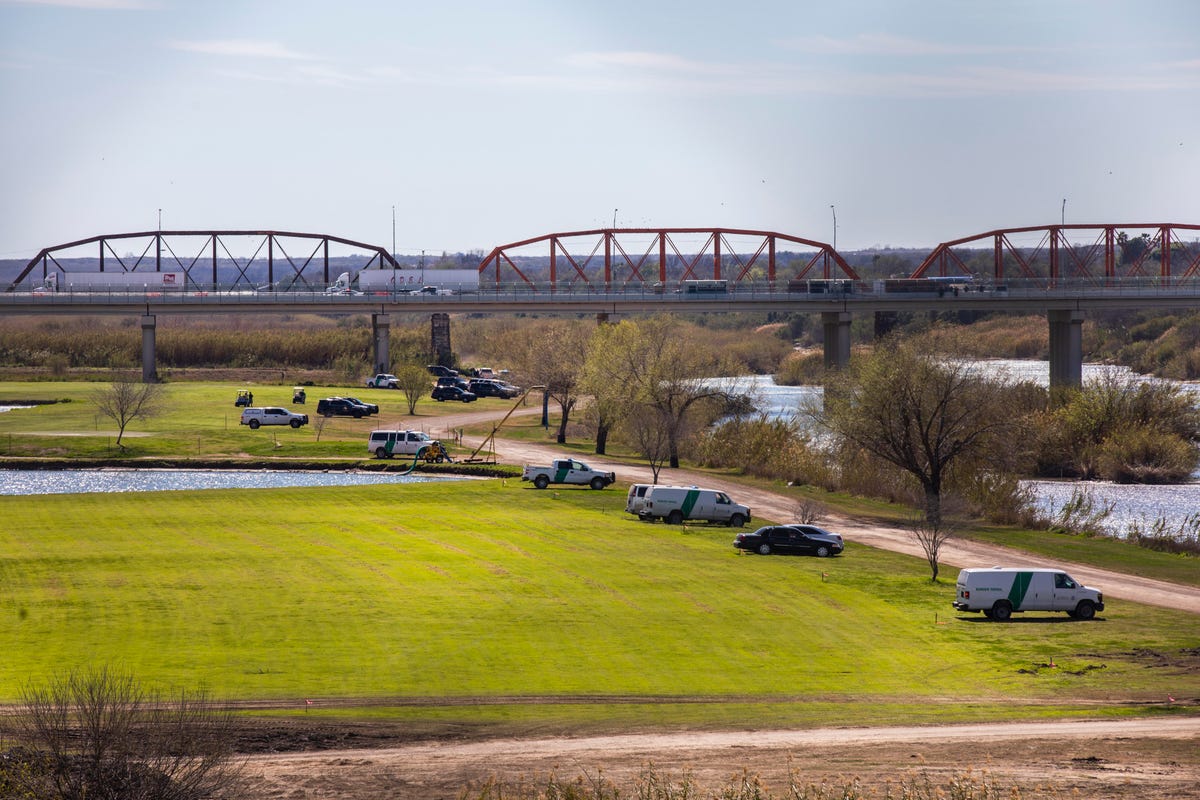
Hundreds of state and federal agents in black SUVs and green-and-white vans and pickups face the Rio Grande and stare down an entire country and a perceived threat of migrants.
Across the river, in the Mexican city of Piedras Negras, a caravan of about 1,800 Central American immigrants, including families with young children, arrived at the start of the month. They'd trekked more than 1,500 miles to ask the US government for asylum. Most said they were trying to escape threats of violence or death in their home countries.
Read the full story on the borderlands here.
US Border Patrol agents ride on horseback along the Rio Grande in Eagle Pass, Texas.
Read the full story on the borderlands here.
Migrants who were part of a caravan are detained at a former factory in Piedras Negras, Mexico.
Read the full story on the borderlands here.
From a control room in Laredo, Texas, Border Patrol agents and National Guard personnel monitor a section of the border where they control cameras. They also get inputs from seismic ground sensors that pick up footsteps and vehicle movement. If they notice anything suspicious, they immediately radio agents in the field.
Read the full story on the borderlands here.
A Border Patrol agent navigates a thicket. A colleague of his says migrants have the advantage: Because of the landscape, they can see the agents but the agents can't see them. And once they get to the US side, they can still evade the cameras.
Read the full story on the borderlands here.
Daylight and infrared cameras sit atop 120 foot towers and face up and down the Rio Grande. The footage from these cameras is what agents back at the control center are monitoring. They're looking for people swimming across the river or traversing it in canoes, inflatable rafts or inner tubes.
Read the full story on the borderlands here.
People line up inside a migrant detention center in Piedras Negras, Mexico.
Read the full story on the borderlands here.
At a detention center in Piedras Negras, Mexico, a young girl clings to the yellow chain-link fence.
Read the full story on the borderlands here.
At the entrance to the detention center in Piedras Negras, Mexico, a big red and white sign reads "Albergue Migrante, Migrant Hostel." The entire facility is roughly the size of a football field and is encircled by a yellow chain-link fence topped with barbed wire. It's also guarded by Mexican Federal Police.
Read the full story on the borderlands here.
Mexican Federal Police at the detention center in Piedras Negras, Mexico.
Read the full story on the borderlands here.
A young boy reaches his hand through the yellow chain-link fence at the detention facility in Piedras Negras, Mexico.
Read the full story on the borderlands here.
A detainee speaking to CNET reporter Dara Kerr from inside the detention facility in Piedras Negras, Mexico.
Read the full story on the borderlands here.
A drainage tunnel in Laredo, Texas. The US Border Patrol has covered it with a metal gate so no one can sneak in.
Read the full story on the borderlands here.
A US Border Patrol agent with a dog used to track people crossing the border.
Read the full story on the borderlands here.
US Border Patrol agents apprehend Mexican immigrants in Laredo, Texas.
Read the full story on the borderlands here.
After a chase through the brush, US Border Patrol agents treat an injured detainee in Laredo, Texas.
Read the full story on the borderlands here.
US Border Patrol agents in Laredo, Texas, interview detained migrants who attempted to cross into the US from Mexico.
Read the full story on the borderlands here.
Border agents use information from the cameras feeding into the control center to intercept people crossing the border in Laredo, Texas.
Read the full story on the borderlands here.
The life of a migrant seeking safety involves a lot of waiting for paperwork and processing.
Read the full story on the borderlands here.
In a dusty yard at the facility in Piedras Negras, Mexico, people stand around for hours waiting to be called.
Read the full story on the borderlands here.
At the facility in Piedras Negras, Mexico, hundreds wait for their chance to cross the bridge to Eagle Pass, Texas. It's a decidedly low-tech affair, with people standing around for hours. The migrants say about 15 people per day are let out.
Read the full story on the borderlands here.
A girl in the detention facility in Piedras Negras, Mexico.
"Crossing the river? No. I came here with the wish to do it right. To cross the bridge calmly and to respect the laws," her mother said. "I just hope that Donald Trump helps us."
Read the full story on the borderlands here.

